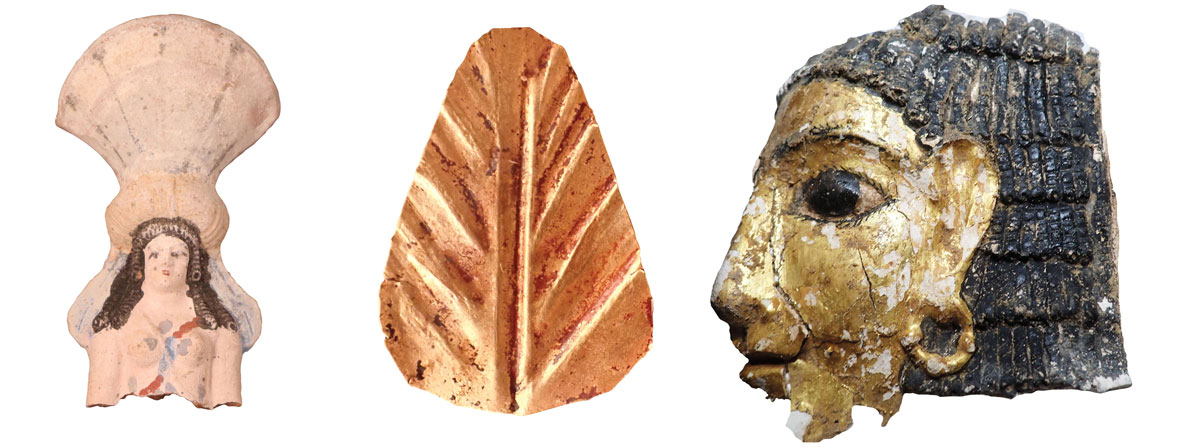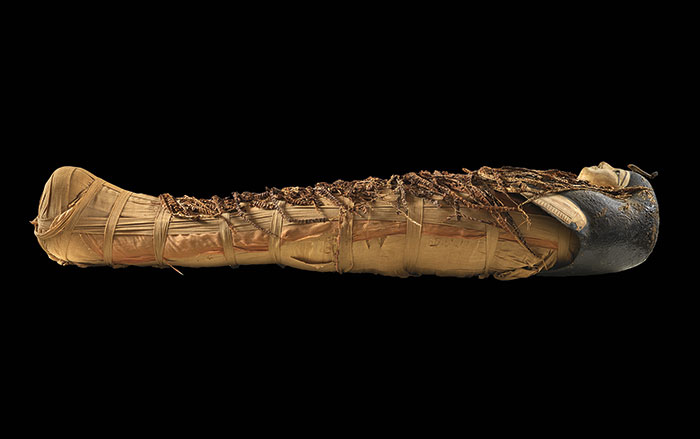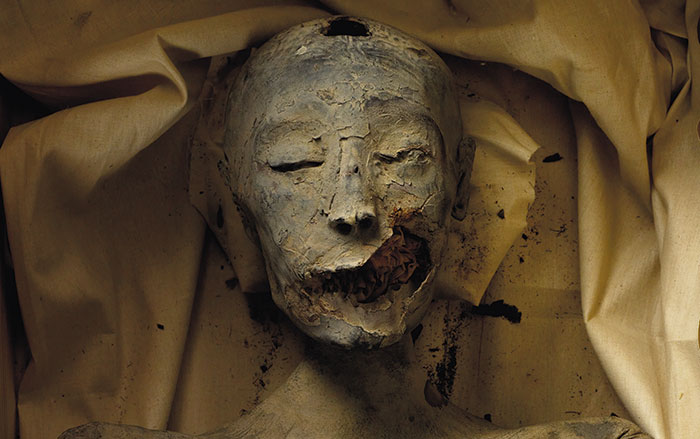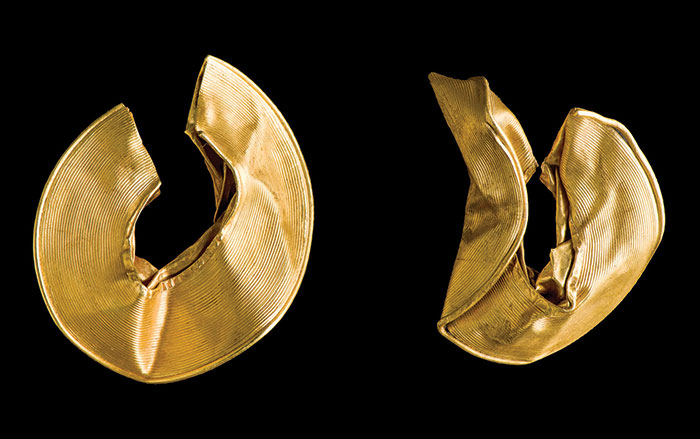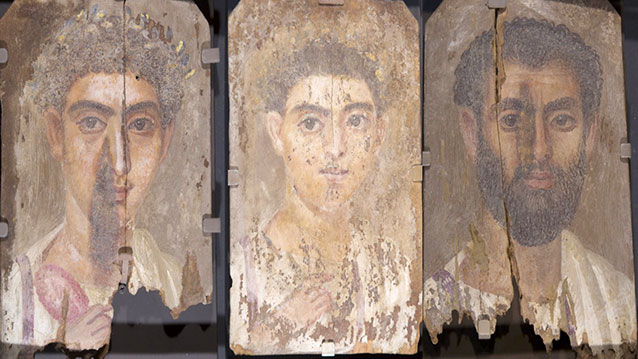
EVANSTON, ILLINOIS—The pigment Egyptian blue has been found hidden in Roman-era Egyptian mummy portraits by a team of scientists from Northwestern University and the Phoebe A. Hearst Museum of Anthropology at the University of California, Berkeley. In visible light, only the colors yellow, white, black, and red can be seen by the naked eye in the paintings, which were discovered at the turn of the twentieth century at the site of Tebtunis in the Fayum region of Egypt. “But when we started doing our analysis, all of a sudden we started to see strange occurrences of this blue pigment, which luminesces. We concluded that although the painters were trying hard not to show they were using this color, they were definitely using blue,” Marc Walton of Northwestern University said in a press release. Roman-era painters emulated Greek art by using the Greek palette of yellow, white, black, and red, and not the man-made blue pigment. “We are speculating that the blue has a shiny quality to it, that it glistens a little when the light hits the pigment in certain ways. The artists could be exploiting these other properties of the blue color that might not necessarily be intuitive to us at first glance,” he said. To read more, go to "From Egyptian Blue to Infrared."


